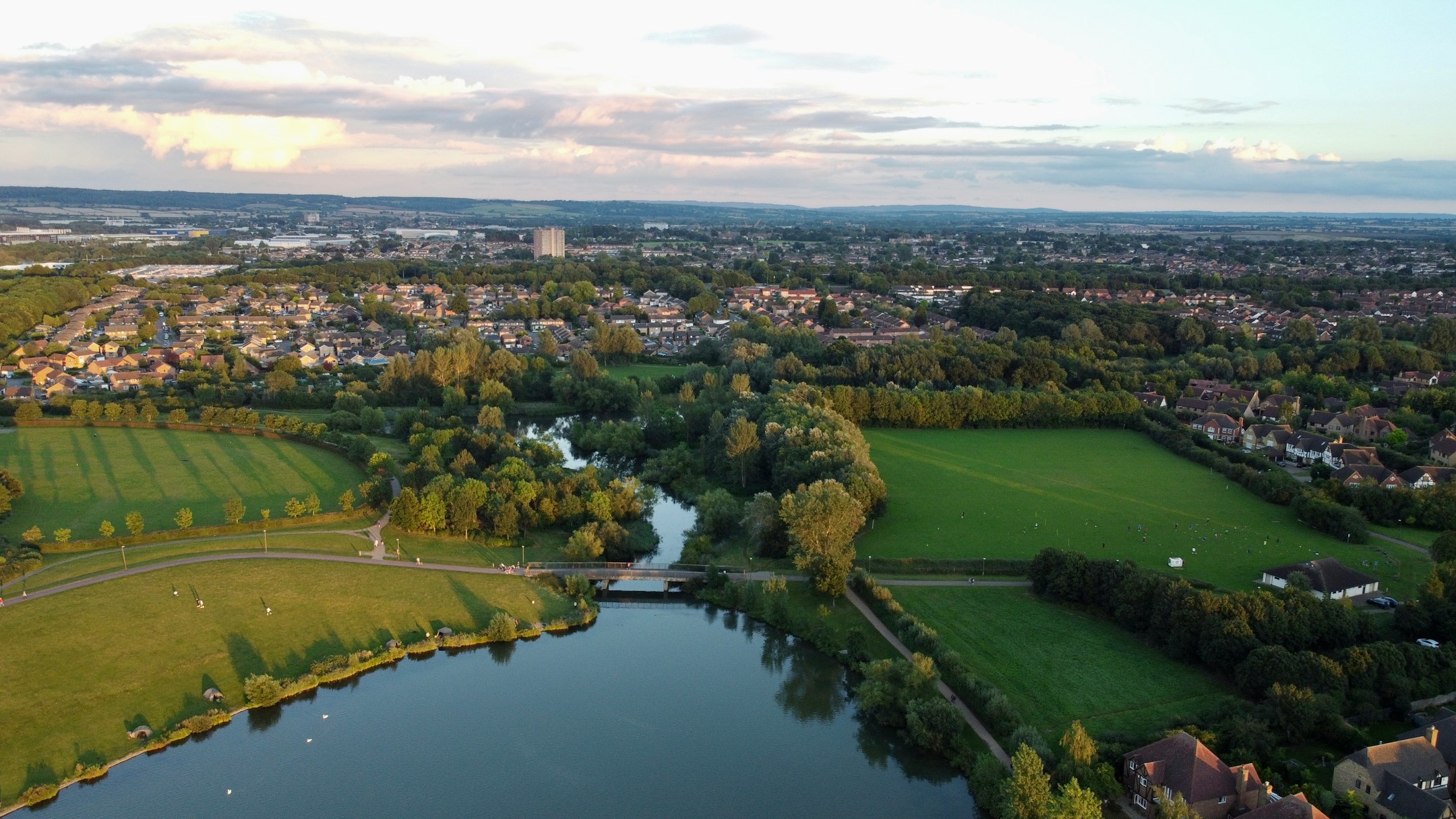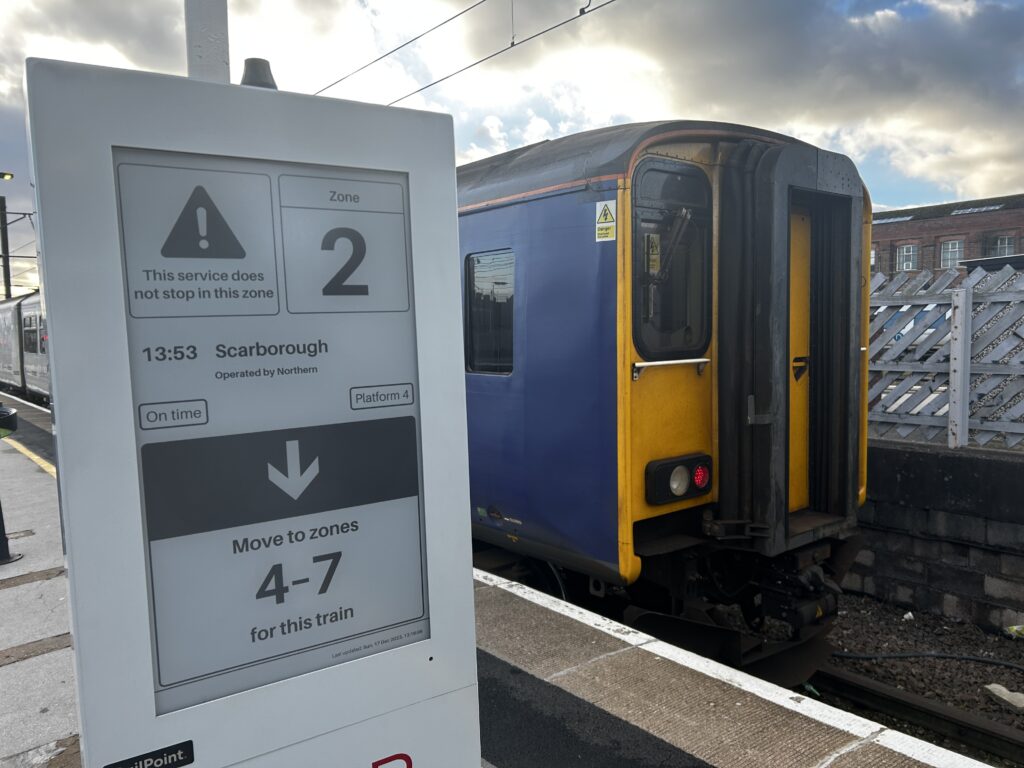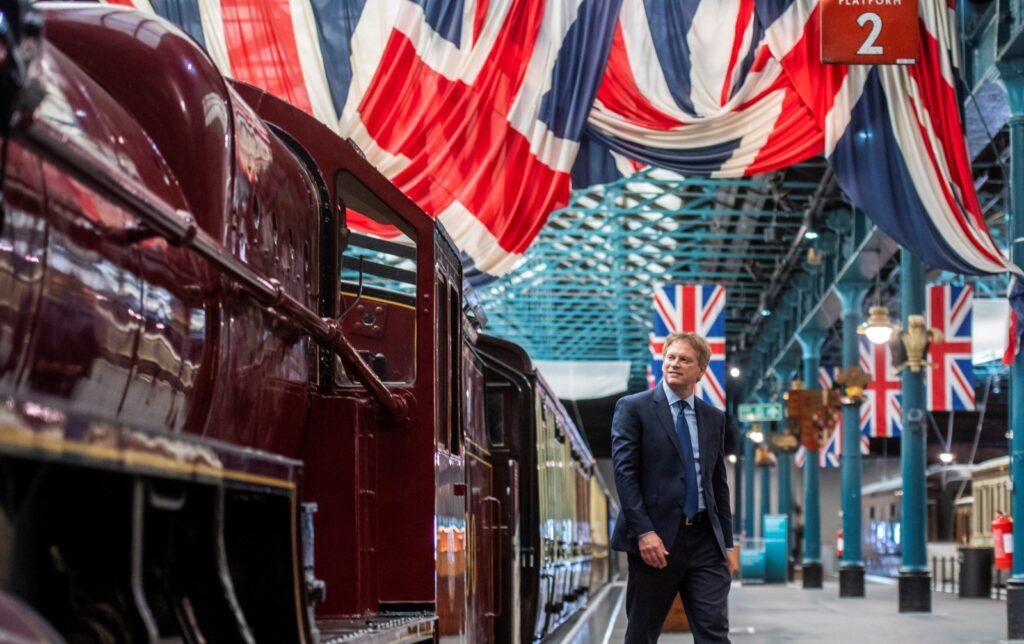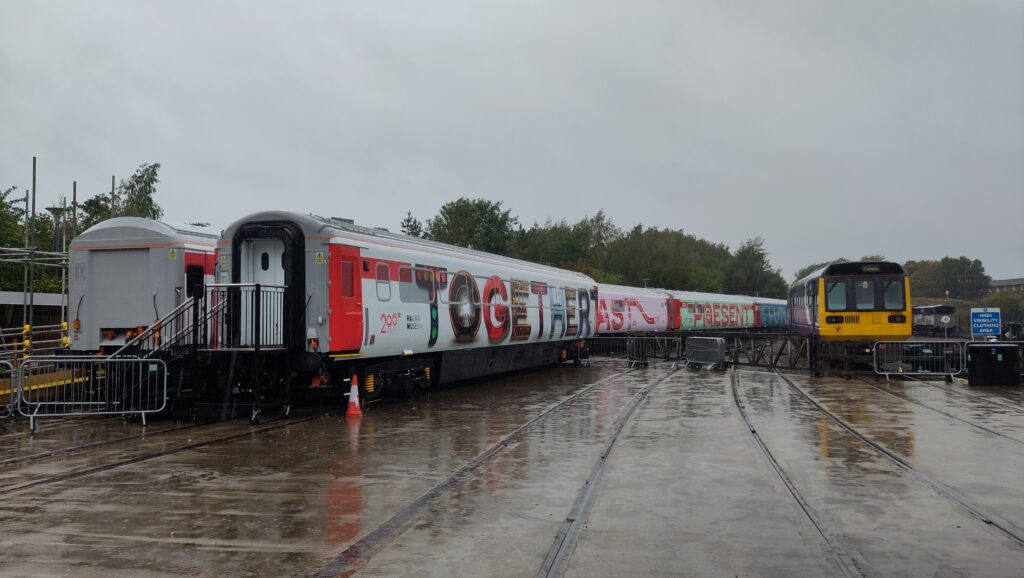Out of the over 50 British towns I have designed tram networks for, Milton Keynes is one of a few which I have lived in.
I’ve spent a month living in the city while travelling around on the canal boat I call home and while I think the city itself is incredibly dull, it raises a lot of questions regarding city planning. One factor that cannot be overlooked is its lack of trams and, with its unique road layout, how easy it would be to construct a tram network.
There are many reasons that Milton Keynes should invest in constructing a tram network:
- The city has a population of almost 300,000 with local government plans to make it 400,000 within the coming decades. If this ambition is to be realised, they need higher order transit as densifying the city centre and sparser areas around the city would be the easiest way to go about reaching such a goal.
- It should be low-cost to construct compared to other UK cities thanks to the wide streets between the neighbourhoods, and the potential of some underused Redways to be repurposed or reschemed within new road layouts as the network is built.
- There are many car parks in the city centre. This is unpleasant to walk through at present, but with trams, there would be less need for parking spaces throughout the city and they could be re-landscaped to be incorporated with tram stops.
- At the edges of the city are 4 historic towns which are local centres in their own right (Bletchley, Wolverton, Newport Pagnell and Stoney Stratford). These create optimum opportunities for frequent, all-day bi-directional trips on all of the proposed tram lines.
- Lastly, and quite ironically, the city was originally built to be perfect for cars, but with this has of course come lots of driving, therefore lots of traffic and adversely, lots of pollution. This incessant, eternal traffic and its resulting pollution negatively impacts the many parks around the city. A tram network (along with more frequent and electric buses) would lower pollution across the city so these areas are affected less and feel more serene and peaceful as parks should be.
Goals for the tram’s construction should be that at least three quarters of all the grid squares have a tram stop within or on the edge of them and each line should end in either one of Milton Keynes’ peripheral, centuries old towns or a large job or retail site. The tram routes should run along a divided highway or road with enough of a verge that a parallel transport corridor can coexist ideally for bikes or feeder buses. Exceptions for this last goal should be made for when trams go through centuries old towns such as Stoney Stratford.
Blue Line (West to East)
This would be the main line serving the city, as it runs between the Central railway station and the shopping centre along Midsummer Boulevard. It would result in a perfect opportunity to remodel the area around the station to not only incorporate new tram lines but also improve bus infrastructure around the station. Currently, the square in front of the station entrance is heavily dominated by bus bays, some of which are rarely used and require buses to loop from other main roads to serve the station as there is no road access to the station from the west side, where the A5 runs.
My ideal remodel for the station concourse would mean it sits on 2 levels. The ground level would be, on the majority, pedestrianised, with the trams running through the square. It would include bike parking around benches and trees so that those who arrive do so in a pleasant environment.
The second level would be underground with the entrance hall including a basement level. Bus-only flyovers could be built connecting the A5 to this basement’s west side and would allow for long distance buses to stop at the station without having to go the long way round from the A5 junctions. Most long distance buses, once in the city, continue to the city centre where they turn around, adding to traffic and pollution. With these A5 flyovers, these long distance bus routes could be combined with each other. Located on the east side of this level would be bays for city buses and car drop-off points.
Once in the city centre, my proposed line will run along Midsummer Boulevard and through the extension to the shopping centre (centre:mk) over said street. This was controversial when built in the early 2000s as it cut the main street through Central Milton Keynes in half but routing the line through here would reverse that and make the street whole again. It would also facilitate an indoor tram stop to serve the mall and the shops in this specific part very directly.
The two branches going west would cross the A5 to serve all communities in the west of the city as far north as Stoney Stratford and south down to Bletchley.
Going east, one branch would end in Newport Pagnell, where it would meet a branch of the green line, and Kingston retail park where it might also cross the green line. A tram/bus interchange could be built integrated into the existing shopping centre with new offices and housing and a town square surrounding the tram stop. This branch would end in Caldecotte and by Bow Brickhill station which would allow for people along the line heading to Bedford to not have to change in Milton Keynes or Bletchley during their journey.
Green Line
The green line would only begin construction after the build-out of the main aspects of the blue line, as the purpose of this line would be to connect neighbourhoods not served by the blue line with the town centre and, at three of its ends, the historic towns. It wouldn’t have much of a role for trips across just the city centre but would serve key locations such as the Hospital and Open University. The south-east branch could go one of two routes, one going more easterly towards Kingston Retail Park and the large industry around Eagle Farm, or to the same end location but via the Open University campus and Wavendon. Through this method, all but five of Milton Keynes’ famous grid-square neighbourhoods would be served by at least one tram line.
Possible order of construction
- Remodel around the Central railway station to incorporate trams, better bus flow and more pedestrian space
- Build the tracks to the mall, with stops incorporated into the building, and then slightly further east as far as Portway and Campbell Park
- Extend the blue line west from the station to Westcroft Retail Park with a depot built around Shenley Brook End
- Extend the blue line east to Kingston Retail Park
- Build the first parts of the green line south to Netherfield via the hospital and North to Newport Pagnell with the green line depot at Heelands
- Extend the green line north-west to Wolverton and Stoney Stratford
- Extend the green line south to Bletchley railway station and remodel the bus bays around the station incorporated with the new tram line
- Extend the blue line south from Kingston Retail Park to Bow Brickhill railway station
- Extend the green line south of Bletchley to Windermere Drive
- Extend the blue line west branches north to Stoney Stratford and south to Bletchley
- Build the eastern branch of the green line as far as Kingston Retail Park to act as a local bus and tram interchange, or to the Open University.
- Build the final extension of the green line to Eagle Farm
Conclusion
While it may be very ambitious to propose a four-line tram system for a city the size of Milton Keynes, especially in Great Britain, I think that, if there is a shift in the Government’s attitude towards public transport, it could become a reality. Cities of a similar size in France have around 2 tram lines each. One in particular, Rennes, even has a metro so it is within reach. Even the local council has mooted aspirations for a tram system across the city at some point in the future and with the ease of building it, I think it is likely that Milton Keynes would be the first city/urban area of its size in the UK to get trams.
Read some of our other blog posts




